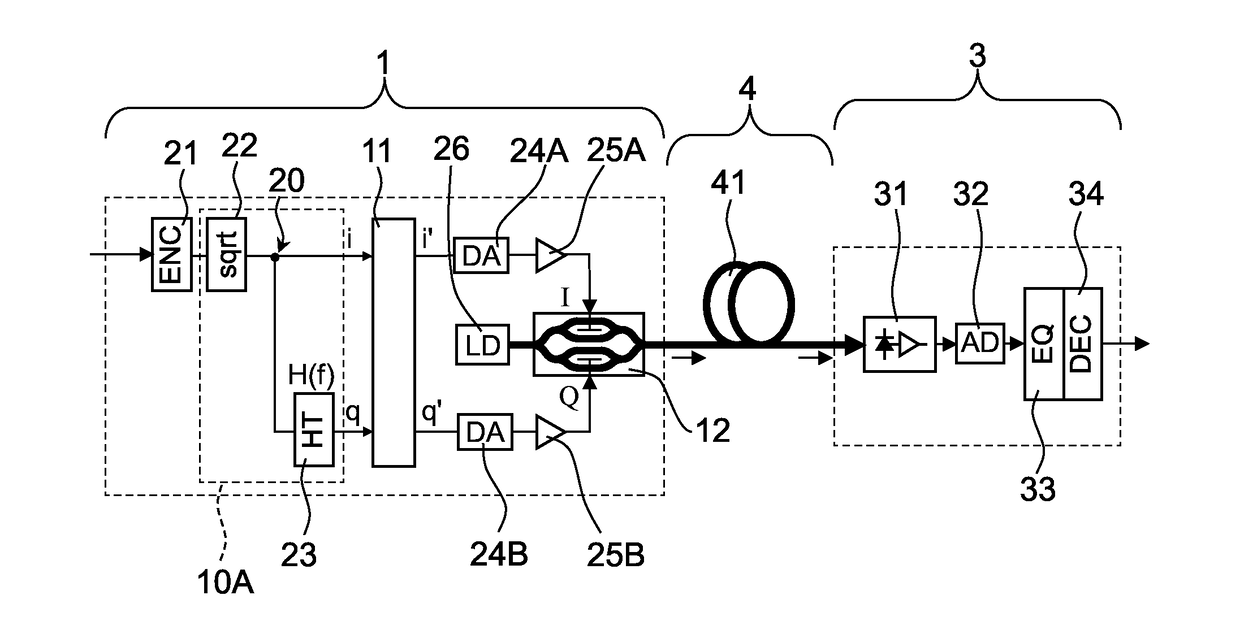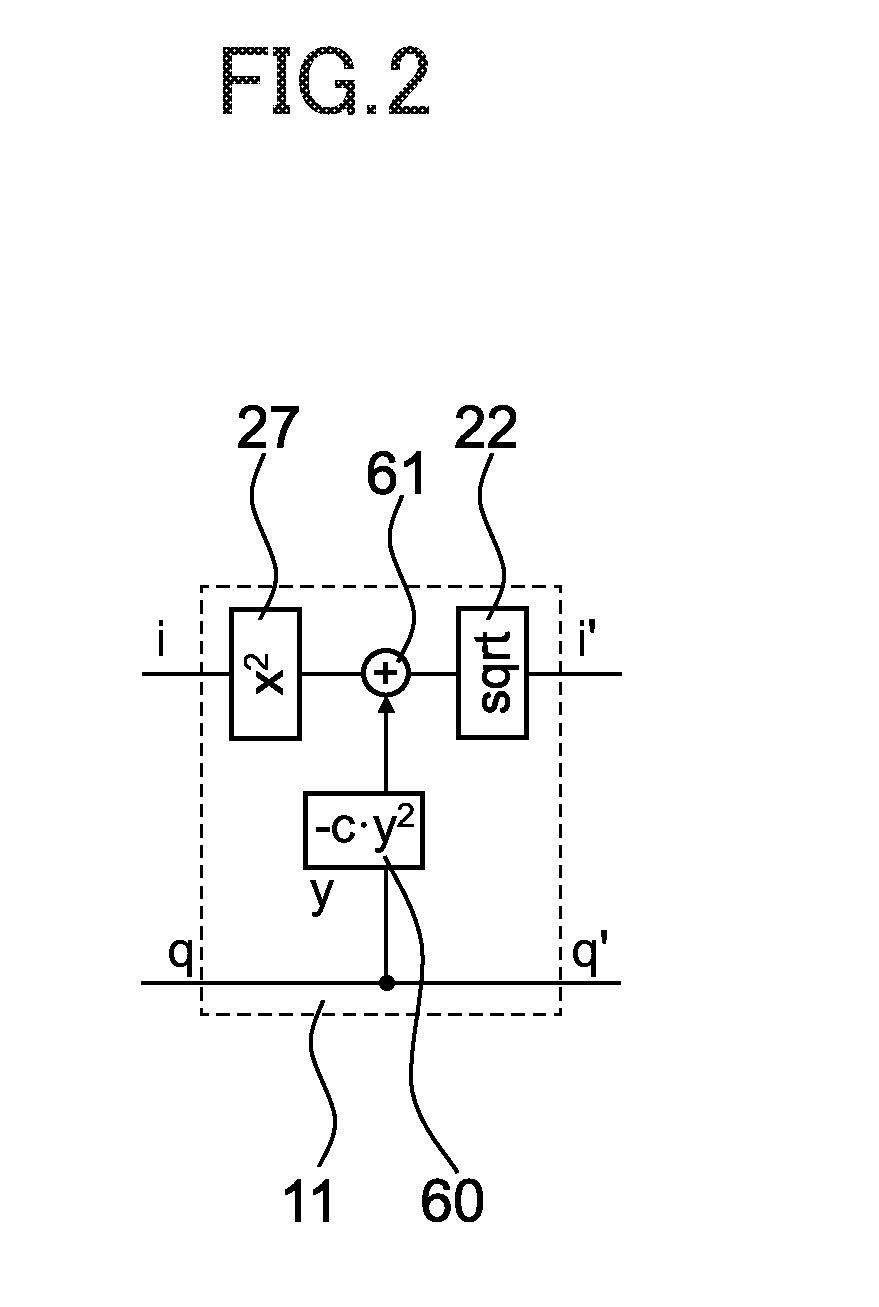Optical communication system and optical transmitter
a communication system and optical transmitter technology, applied in the field of optical communication technology, can solve the problems of limited transmission capacity and difficult density wavelength division multiplexing, and achieve the effect of suppressing the deterioration of intensity waveform, improving bit error ratio and receiver sensitivity
- Summary
- Abstract
- Description
- Claims
- Application Information
AI Technical Summary
Benefits of technology
Problems solved by technology
Method used
Image
Examples
first embodiment
[0058]FIG. 1 is a schematic diagram for illustrating a configuration of an optical communication system according to a first embodiment of the present invention. The optical communication system according to this embodiment is configured to transmit an optical signal subjected to optical multi-level baseband intensity modulation through an optical fiber transmission line having a relatively short transmission distance of from several hundred meters to several tens of kilometers. The optical communication system according to this embodiment includes an optical transmitter section 1, an optical receiver section 3, and an optical transmission section 4.
[0059]The optical transmitter section 1 is an SSB optical pulse amplitude modulation transmitter, and includes a waveform distortion correction circuit 11, an optical IQ modulator 12, a branch point 20, a multi-level coding circuit 21, a square rooting circuit 22, a Hilbert transformer 23, two DA converters 24A and 24B, two driver amplif...
second embodiment
[0075]FIG. 3 is a schematic diagram for illustrating a configuration of the optical transmitter section 1 according to a second embodiment of the present invention. The optical communication system according to this embodiment is the same as the optical communication system according to the first embodiment except that the optical transmitter section 1 has a different configuration. Specifically, the square rooting circuit 22 is arranged in a different position, and in accordance with the difference, configurations of a waveform distortion correction circuit 13 and an optical IQ modulator 14 are different. An SSB modulation transformation circuit 10B according to this embodiment includes the branch point 20, the square rooting circuit 22, and the Hilbert transformer 23.
[0076]As illustrated in FIG. 3, in the optical transmitter section 1, the multi-level coding circuit 21 outputs a quaternary code. The quaternary code is divided into two signals at the branch point 20, and one signal...
third embodiment
[0080]FIG. 5 is a schematic diagram for illustrating a configuration of the optical transmitter section 1 according to a third embodiment of the present invention. The optical communication system according to this embodiment is the same as the optical communication system according to the second embodiment except that the optical transmitter section 1 further includes a Nyquist filter 51 having a Nyquist filter transmission characteristic. In the optical transmitter section 1, the Nyquist filter 51 is arranged in the subsequent stage of the multi-level coding circuit 21. An SSB modulation transformation circuit 10C according to this embodiment includes the branch point 20, the square rooting circuit 22, the Hilbert transformer 23, and the Nyquist filter 51. With this configuration, optical Nyquist modulation that further constricts the band of the optical signal is achieved. The Nyquist modulation is a technology for reducing the signal frequency band by about ½ by forming an elect...
PUM
 Login to View More
Login to View More Abstract
Description
Claims
Application Information
 Login to View More
Login to View More - R&D
- Intellectual Property
- Life Sciences
- Materials
- Tech Scout
- Unparalleled Data Quality
- Higher Quality Content
- 60% Fewer Hallucinations
Browse by: Latest US Patents, China's latest patents, Technical Efficacy Thesaurus, Application Domain, Technology Topic, Popular Technical Reports.
© 2025 PatSnap. All rights reserved.Legal|Privacy policy|Modern Slavery Act Transparency Statement|Sitemap|About US| Contact US: help@patsnap.com



